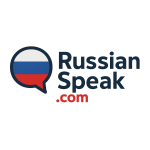Table of Contents
ToggleUnderstanding the Russian Vowel System

The Russian vowel system comprises ten distinct vowel sounds that play an essential role in phonetic structure and meaning. These vowels exhibit significant interaction through the principles of vowel harmony, a phenomenon whereby vowels within a word harmonize to maintain a consistent quality, often based on frontness or backness.
This aspect of Russian phonology guarantees that vowel selection aligns with the surrounding consonants, fostering a cohesive auditory experience.
Additionally, vowel reduction is a critical feature in unstressed syllables, where certain vowels may be pronounced less distinctly, leading to a neutralization of quality. This reduction is crucial for achieving fluency in spoken Russian, as it affects both comprehension and articulation.
Understanding these systems enhances learners’ grasp of pronunciation nuances and reinforces the intricate relationship between phonetics and meaning in the language. Mastery of vowel harmony and reduction equips individuals with greater freedom in maneuvering the complexities of Russian phonology.
The Five Basic Russian Vowels
Central to the Russian vowel system are five basic vowel sounds: а, е, ё, и, and о. Each of these vowels serves as a foundation for constructing various vowel combinations, which contribute to the richness of the language. Understanding these fundamental sounds is essential for mastering pronunciation and communication.
| Vowel | IPA Representation | Example Word | English Translation |
|---|---|---|---|
| а | [a] | мама | mom |
| е | [je] | еда | food |
| ё | [jo] | ёжик | hedgehog |
| и | [i] | мир | world |
| о | [o] | дом | house |
These vowel sounds not only form the core of Russian phonetics but also interact with consonants to create diverse vowel combinations. By grasping these elements, learners can enhance their linguistic freedom and expressiveness in the Russian language.
The Importance of Vowel Length
Vowel length plays an essential role in the phonetic structure of the Russian language, influencing both meaning and pronunciation. In Russian, vowel duration can greatly alter the meaning of words, making it critical for learners to master this aspect. For example, a single vowel sound may be pronounced with varying lengths, creating distinctions that can lead to different interpretations.
Furthermore, stress patterns in Russian often determine vowel length, as unstressed vowels tend to be shorter and may undergo reduction. This interaction between vowel duration and stress can complicate pronunciation for non-native speakers, as misplacing stress may lead to misunderstandings.
The technical interplay of vowel length and stress patterns underscores the necessity for learners to develop a keen awareness of these phonetic elements. Consequently, understanding vowel length not only enhances pronunciation but also improves overall comprehension in the Russian language.
Common Pronunciation Challenges
Pronunciation challenges in Russian often stem from the intricate nature of its vowel system and the influence of stress. Learners frequently encounter complications related to vowel harmony and the distinctions made by various regional accents. These factors can lead to misunderstandings and miscommunications, which may hinder the pursuit of linguistic freedom.
Key challenges include:
- Vowel Reduction: Unstressed vowels can sound drastically different from their stressed counterparts, complicating recognition.
- Regional Variations: Accents can greatly alter vowel pronunciation, making it difficult to standardize learning.
- Length and Quality: The interplay between vowel length and quality can confuse learners, as variations may change word meanings.
- Stress Patterns: Incorrect stress placement can lead to mispronunciation and misinterpretation, affecting fluency.
These challenges underscore the need for a nuanced approach to mastering Russian vowels, essential for effective communication.
Exploring Vowel Reduction Patterns
Observers of the Russian language will note that stress patterns greatly shape vowel behavior, guiding the shift toward understanding vowel reduction. This phenomenon, central to phonetic clarity, manifests when vowels in unstressed positions lose distinctiveness, often merging into a more neutral sound. Such transformations are not arbitrary but follow systematic rules tied to syllable structure, where the position of a vowel relative to stress dictates its pronunciation. This structural interplay offers learners the freedom to decode spoken Russian with greater accuracy.
Furthermore, while vowel harmony is less prominent in Russian compared to other languages, subtle tendencies emerge in reduction patterns, aligning vowels within a word to maintain phonetic flow. Scholars observe that unstressed syllables often exhibit reduced vowel quality, reflecting an inherent balance in the language’s rhythm.
Embracing these patterns liberates one from mispronunciation, fostering a deeper connection to Russian’s melodic and structural essence through informed analysis.
Tips for Practicing Russian Vowels
Mastering Russian vowels requires a strategic approach that emphasizes consistent practice and targeted exercises. To effectively enhance vowel pronunciation, learners should engage in structured vowel exercises that focus on both articulation and auditory recognition. These exercises can include repetition drills, minimal pair contrasts, and shadowing techniques, where learners mimic native speakers.
Incorporating listening practice is equally essential; exposure to authentic audio sources such as podcasts, music, and films allows students to contextualize their learning. This dual approach fosters an understanding of vowel sounds within natural speech patterns.
Moreover, utilizing language learning apps that offer feedback on pronunciation can further refine skills. Learners should also consider recording their own speech to identify areas needing improvement.
Mastering Russian vowels is a key step in learning the language, as vowels affect not only pronunciation but also meaning. Russian has 10 vowel sounds represented by 10 letters, and they can change depending on stress and surrounding consonants. Here is a detailed guide to help you improve your Russian vowel pronunciation through effective practice techniques and examples.
1. Understand the Russian Vowel System
Russian vowels are divided into stressed and unstressed vowels, which can sound quite different. The main vowels are:
- А /а/ (a)
- Э /э/ (e)
- И /и/ (i)
- О /о/ (o)
- У /у/ (u)
- Ы /ы/ (hard i sound)
- Е /е/ (ye)
- Ё /ё/ (yo)
- Ю /ю/ (yu)
- Я /я/ (ya)
Important Notes:
- Stress affects the vowel quality. For example, unstressed “О” often sounds like “А.”
- Some vowels (Е, Ё, Ю, Я) indicate that the preceding consonant is soft (palatalized).
2. Structured Vowel Practice Exercises
a. Repetition Drills
Repeat each vowel sound clearly and slowly, focusing on mouth shape and tongue position.
Example:
- А: мама (mama) — mom
- Э: нет (net) — no
- И: мир (mir) — world
b. Minimal Pair Contrasts
Practice pairs of words that differ by one vowel to sharpen your ear.
Examples:
| Word 1 | Word 2 | Meaning 1 | Meaning 2 |
|---|---|---|---|
| мак (mak) | мок (mok) | poppy | wet |
| бит (bit) | бот (bot) | beat | boot |
c. Shadowing Technique
Listen to a native speaker say a word or phrase and immediately repeat it aloud, trying to match their vowel sounds and intonation.
3. Listening Practice with Authentic Materials
Regularly listen to Russian podcasts, songs, and films. Focus on how vowels sound in natural speech. Try to identify stressed vowels and notice how unstressed vowels change.
Recommended:
- Russian children’s songs for clear vowel sounds.
- News podcasts for formal pronunciation.
- Films with subtitles to connect spoken and written forms.
4. Use Recordings To Study Your Pronunciation Feedback
Record yourself and get feedback from native speakers or AI. This helps you catch subtle mistakes in vowel sounds.
5. Self-recording for Pronunciation Improvement
Record yourself reading Russian texts or speaking spontaneously. Compare your recordings with native speakers to identify which vowels need more work.
6. Common Russian Vowel Terms for English Speakers
Here is a helpful table with key Russian terms related to vowels:
| Cyrillic | Phonetic | English Definition |
|---|---|---|
| гласный | glasnyy | vowel |
| согласный | soglasnyy | consonant |
| ударение | udareniye | stress (on a syllable) |
| мягкий | myagkiy | soft (palatalized sound) |
| твёрдый | tvyordyy | hard (non-palatalized sound) |
| безударный | bezudarniy | unstressed |
| ударный | udarnyy | stressed |
| звук | zvuk | sound |
| произношение | proiznosheniye | pronunciation |
![]()
Remember
- Start with clear understanding of the vowel system.
- Use repetition drills, minimal pairs, and shadowing regularly.
- Listen to native speech in different contexts.
- Use apps and self-recording for feedback.
- Learn key terminology to understand explanations better.
Consistent practice using these steps will significantly improve your Russian vowel pronunciation and overall speaking skills.
Frequently Asked Questions
How Do Russian Vowels Differ From English Vowels?
Russian vowels exhibit distinct characteristics compared to English vowels, particularly regarding vowel harmony and stress patterns. These features influence pronunciation and meaning, necessitating a nuanced understanding for learners aiming to master the Russian language effectively.
Are There Any Regional Variations in Vowel Pronunciation?
Regional variations in Russian vowel pronunciation are evident, particularly between Moscow accents and Siberian dialects. Moscow accents often feature clearer vowel articulation, while Siberian dialects may exhibit more pronounced vowel shifts, reflecting diverse phonetic landscapes across the country.
Can Vowel Pronunciation Change Meanings of Words?
Vowel pronunciation greatly influences word meanings, as vowel shifts can alter phonetic structures. This linguistic phenomenon underscores the importance of precise articulation in communication, highlighting how subtle variations can lead to distinct interpretations in language.
What Resources Are Best for Practicing Russian Vowels?
To effectively practice Russian vowels, utilizing practice apps and online courses is essential. These resources provide structured exercises, audio feedback, and interactive platforms, facilitating an extensive understanding of vowel sounds and their applications in various contexts.
How Can I Improve My Listening Skills for Russian Vowels?
To improve listening skills, one should engage in targeted listening exercises and phonetic drills. These methodologies enhance auditory discrimination, enabling learners to identify and differentiate vowel sounds more effectively, ultimately fostering greater linguistic proficiency and autonomy.
Do Dialects Affect Russian Vowel Pronunciation?
Dialect Influences greatly shape Russian vowel pronunciation, reflecting regional diversity. Through systematic analysis, one observes Vowel Evolution driven by historical and cultural shifts, empowering individuals to appreciate linguistic freedom across varied Russian-speaking communities.
Why Are Russian Vowels Important for Fluency?
Russian vowels are essential for achieving fluency, as they shape communication clarity. Vowel Evolution reflects linguistic nuances, while Fluency Challenges arise from mispronunciation. Mastering them empowers individuals to express ideas freely and accurately.
How Long Does It Take to Learn Russian Vowels?
Determining the duration to master specific linguistic elements varies widely. Time Estimation for grasping such components depends on Learner Variability, including dedication and prior experience. Empirically, consistent practice empowers individuals to progress at their own pace.
Are Russian Vowels Similar to Other Slavic Languages?
Examining whether Russian vowels align with those of other Slavic languages reveals intricate Vowel Evolution and distinct Phonetic Contrasts. This systematic analysis uncovers shared roots and unique divergences, empowering individuals to explore linguistic freedoms.





